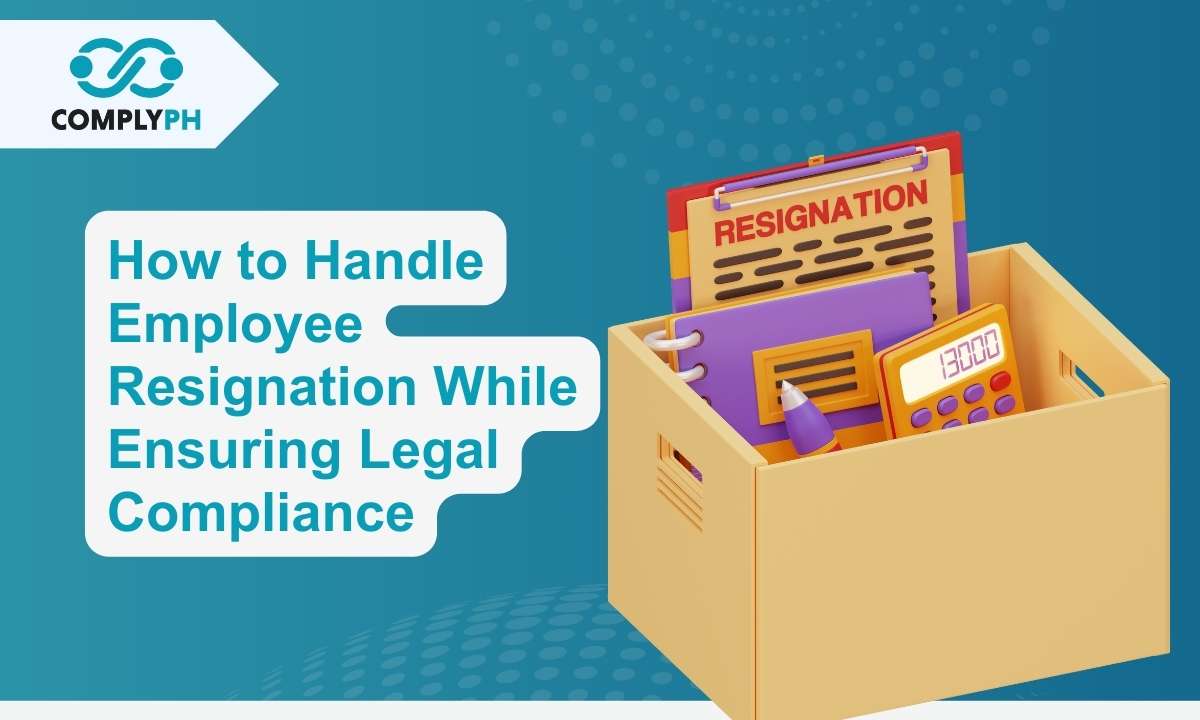Handling employee resignation can be a sensitive and complex process, especially when you’re managing a team in the Philippines. Whether you’re working with traditional employees or virtual staff, ensuring legal compliance while maintaining a positive working relationship is key.
In this guide, we’ll walk you through the essential steps to handle resignations smoothly and ethically, while highlighting how Comply.ph can help you build virtual teams and navigate employee conversions with ease.
Understanding Employee Resignation in the Philippines
Before diving into the steps, it’s essential to understand the rules and expectations around employee resignation in the Philippines. Here are some key points to consider:
- Notice Period Requirements: The Philippine Labor Code requires employees to provide at least 30 days’ notice before resigning. This period allows employers to find a replacement and ensures a smoother transition.
- Immediate Resignation: Employees may resign without notice under certain conditions, such as unsafe working environments or employer violations of the employment contract.
- Final Pay and Clearance: Employers must settle the employee’s final pay, which includes unpaid salaries, unused leave, and other benefits, within a reasonable timeframe.
Knowing these basics ensures that you’re prepared to handle resignations without legal complications.
Step 1: Establish a Resignation Policy
The first step to handling employee resignations is to establish a clear resignation policy in your organization. This policy should outline:
- The required notice period (30 days or more, depending on company policy).
- The process for submitting a resignation, such as a formal letter or email.
- Expectations for turnover or knowledge transfer during the notice period.
- Final pay computation and release timeline.
Having a documented policy makes it easier for both you and your employees to navigate the resignation process. If you’re managing virtual staff or building a team in the Philippines, a resignation policy tailored to remote teams can ensure smoother transitions.
Step 2: Accept the Resignation Gracefully
When an employee submits their resignation, it’s important to handle the situation professionally. Here’s how:
- Acknowledge the Resignation: Respond promptly and acknowledge the employee’s decision in writing.
- Conduct an Exit Interview: Use this opportunity to understand their reasons for leaving. This feedback can help you improve your workplace for current and future employees.
- Maintain a Positive Tone: Whether they’re leaving for personal growth, better opportunities, or other reasons, keep the conversation respectful and supportive.
By showing professionalism and empathy, you leave the door open for future collaborations or referrals.
Step 3: Plan for a Smooth Handover
Resignations can disrupt workflows if not managed effectively. To minimize the impact on your operations:
- Request a Handover Document: Ask the resigning employee to document ongoing tasks, responsibilities, and key contacts.
- Assign a Successor: Identify who will take over their duties during the transition period.
- Schedule Knowledge Transfer Sessions: Arrange meetings between the outgoing employee and their successor to ensure continuity.
For businesses working with freelancers or virtual assistants, this step is especially critical. Comply.ph can assist in creating streamlined processes for managing virtual staff conversions, ensuring minimal disruption to your operations.
Step 4: Ensure Legal Compliance
Legal compliance is non-negotiable when handling resignations. Here’s what you need to do:
- Settle Final Pay: The final pay should include all unpaid wages, unused leave credits, and any pro-rated benefits. Delays or non-payment can lead to legal disputes.
- Issue a Certificate of Employment: This document serves as proof of the employee’s tenure and is required by law.
- File the Necessary Government Forms: Update the employee’s records with relevant government agencies like the SSS, Pag-IBIG, and PhilHealth.
If you’re unsure about the legal requirements, Comply.ph can help. As an Employer of Record in the Philippines, our platform handles payroll, compliance, and benefits administration, so you don’t have to worry about navigating complex labor laws.
Step 5: Retain Your Talent with Employee Conversions
High turnover can disrupt your team and affect your business growth. One way to retain your top talent is through employee conversions. If you’re currently working with freelancers, virtual assistants, or contractors, converting them into full-time employees can build loyalty and ensure long-term stability.
Comply.ph simplifies the conversion process:
- Onboarding Under Our Entity: We onboard your freelancers or virtual staff as full-time employees under our Philippine entity.
- Providing Benefits: From health care to holiday pay, we ensure your team gets the benefits they deserve.
- Compliance Management: We handle payroll, taxes, and labor law compliance, so you can focus on growing your business.
Step 6: Prevent Future Turnover
Resignations are inevitable, but you can take steps to minimize them. Here’s how:
- Build Loyalty: Offer competitive salaries, benefits, and job security to keep your team engaged and committed.
- Foster Professional Growth: Provide training and development opportunities to help employees grow with your company.
- Promote Open Communication: Regularly check in with your team to address concerns and improve morale.
By investing in your team’s well-being, you create a positive work environment that encourages long-term retention. Comply.ph can support you in building virtual teams that are both loyal and productive.
Why Choose Comply.ph for Your Team Management Needs?
At Comply.ph, we understand the challenges of managing teams in the Philippines. Whether you’re building a new team or converting freelancers into full-time employees, our platform offers:
- Seamless Onboarding: We handle the entire onboarding process, from documentation to compliance.
- End-to-End Compliance: Our experts ensure your team meets all Philippine labor laws.
- Cost-Effective Solutions: Save time and resources while securing top talent for the long term.
With Comply.ph, you can focus on scaling your business while we take care of the legal and administrative complexities.
Conclusion
Handling employee resignation in the Philippines requires careful planning, legal compliance, and a commitment to professionalism. By following the steps outlined in this guide, you can ensure a smooth transition for both your team and your business.
If you’re looking to build virtual teams or convert freelancers into loyal, full-time employees, Comply.ph is here to help. Book your free consultation call today and discover how we can make team management seamless and stress-free.


